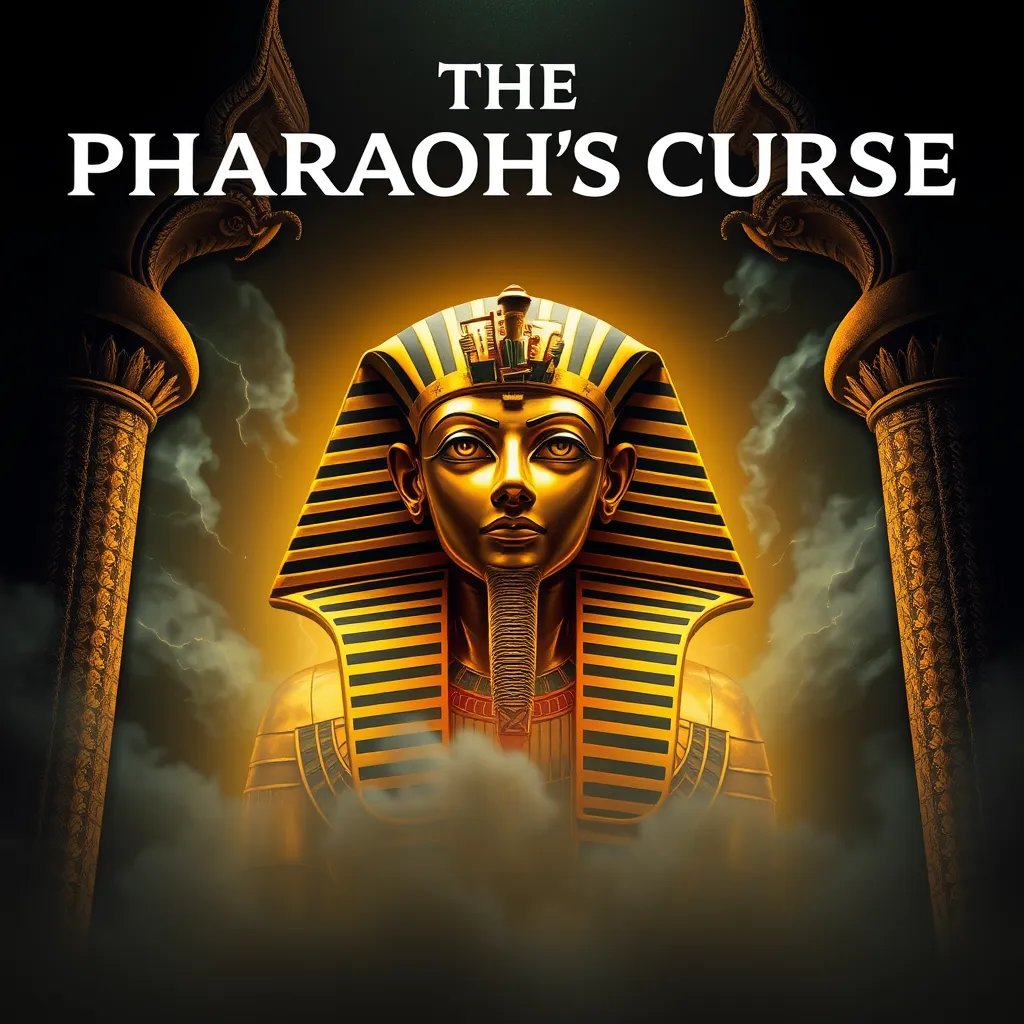The Pharaoh’s Curse: The Truth Behind the Legends of Ancient Egypt
I. Introduction
The legend of the Pharaoh’s Curse has captivated imaginations for centuries, weaving tales of mysterious deaths and supernatural retribution linked to the burial sites of ancient Egyptian rulers. This phenomenon is often tied to the discovery of tombs, particularly that of Tutankhamun, and has led to a rich tapestry of stories that blend history with myth.
Understanding the origins and implications of the Pharaoh’s Curse is crucial, as it allows us to discern the line between historical fact and fictional narrative. The curse has permeated popular culture, featuring prominently in films, literature, and even video games, often portrayed as a supernatural consequence for those who disturb the resting places of the dead.
II. Historical Context of Ancient Egyptian Burials
Burial practices in ancient Egypt were laden with significance, reflecting their beliefs in the afterlife and the importance of preserving the body for eternity. The Egyptians meticulously prepared their dead, ensuring they were equipped for the journey into the next life.
Curses played a notable role in funerary customs, serving both as a warning and a protective measure. Tombs were often inscribed with spells and curses aimed at deterring grave robbers and safeguarding the deceased against any potential threats. Some common elements included:
- Inscriptions warning of dire consequences for tomb violators.
- Protective amulets placed within the burial chamber.
- Elaborate traps and booby traps designed to intimidate would-be robbers.
Examples of known tombs, such as those in the Valley of the Kings, illustrate the lengths to which the ancient Egyptians went to protect their pharaohs in death.
III. The Origins of the Pharaoh’s Curse
The origins of the Pharaoh’s Curse can be traced back to early accounts and folklore surrounding the discovery of tombs. Tales of misfortune befalling those who entered sacred spaces began to circulate long before the advent of modern archaeology.
The discovery of Tutankhamun’s tomb in 1922 by Howard Carter marked a significant turning point in the curse narrative. Following the opening of the tomb, several individuals associated with the excavation reportedly met untimely deaths, fueling speculation about a curse placed on the young pharaoh’s final resting place.
Key figures, such as Lord Carnarvon, the financial backer of the expedition, died shortly after the tomb’s opening, which further ignited public interest and concern. Media coverage at the time sensationalized these events, leading to a widespread belief in the curse.
IV. Scientific Explanations for the Curse
While the tales of the Pharaoh’s Curse are intriguing, scientific investigations offer alternative explanations for the purported misfortunes surrounding tomb discoveries. Various pathogens and toxins have been identified in ancient tombs, potentially contributing to health issues among explorers.
Molds and bacteria, which can thrive in the sealed environments of tombs, may pose health risks to those who enter without proper precautions. Some of the most common culprits include:
- Aspergillus mold, which can cause respiratory issues.
- Bacteria that thrive in damp, enclosed spaces.
Additionally, psychological factors cannot be overlooked. The power of suggestion, coupled with the fear surrounding curses, may lead individuals to attribute their misfortunes to supernatural causes rather than environmental hazards.
V. The Media’s Role in Shaping the Curse Narrative
The early 20th century brought about a new era of sensational journalism that significantly influenced the narrative surrounding the Pharaoh’s Curse. Newspapers and magazines seized upon the mysterious deaths linked to Tutankhamun’s tomb, framing them within a captivating story of ancient retribution.
Film and literature have further contributed to the mythology, depicting curses in ways that resonate with audiences and perpetuate the legend. Notable examples include:
- The 1932 film “The Mummy,” which introduced themes of curses and supernatural vengeance.
- Modern novels and documentaries that explore the allure of ancient Egypt.
Case studies of media sensationalism reveal a pattern where archaeological finds are dramatized, often overshadowing the factual history in favor of a more thrilling narrative.
VI. Debunking the Myths: Archaeological Perspectives
Modern archaeology offers valuable insights that help debunk the myths surrounding the Pharaoh’s Curse. Prominent archaeologists argue that the concept of a curse is more a product of cultural storytelling than a reflection of historical fact.
Many have expressed skepticism towards the notion of a curse, emphasizing the importance of scientific inquiry and historical context. For instance:
- Dr. Zahi Hawass, a leading Egyptologist, has often criticized the media portrayal of curses, advocating for a focus on the archaeological record.
- Studies tracing the health outcomes of tomb explorers reveal no consistent evidence linking their experiences directly to any curse.
By distinguishing between myth and historical reality, archaeologists contribute to a more nuanced understanding of ancient Egyptian culture and its practices.
VII. The Legacy of the Pharaoh’s Curse in Modern Culture
The fascination with curses in popular media continues to thrive, influencing everything from blockbuster films to tourist attractions in Egypt. The allure of the Pharaoh’s Curse enhances the mystique of archaeological sites, drawing visitors eager to experience the history and legends firsthand.
Furthermore, the narrative of the curse serves as a metaphor for the consequences of greed and the exploitation of history. The pursuit of wealth and fame through archaeological discoveries can lead to ethical dilemmas, prompting reflection on the responsibilities of modern explorers and researchers.
VIII. Conclusion
In summary, the Pharaoh’s Curse is a complex interplay of history, myth, and cultural fascination. By examining its origins, scientific explanations, and the role of media, we gain a clearer picture of this legendary phenomenon.
It is essential to separate fact from fiction, recognizing the historical significance of ancient Egyptian burial practices while acknowledging the power of storytelling in shaping public perceptions. The enduring legacy of the Pharaoh’s Curse continues to captivate and intrigue, reminding us of the rich tapestry of human history and belief.




